Big 3 Around AND UNDERLYING the Lower Back
THE PRIMARY CAUSE OF LOWER BACK PAIN is the LOST MOBILITY
The idea of training the lower back, lower abs and sides is well-known and logical.
Exercise is beautiful freedom. I support however you want to train the “Big 3” around your lower spine.
The current Standards and the gradient scales I coach for these areas are:
10 SLOW back extensions with 25 pounds for women or 45 for men. This scales by range and load, even allowing assistance. This allows me to smoothly help students and faculty ranging from age 15 to 85.
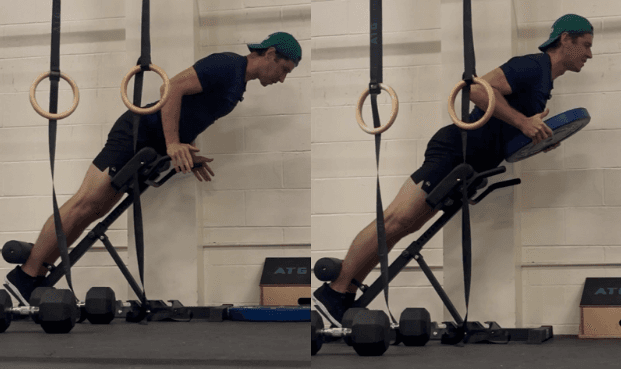
20 knees to triceps is the lower-ab goal, but there’s no rush on how high you get or how many reps you do. Just about anyone can START strengthening the lower abs at some level, and the end goal puts you in elite territory, simply.
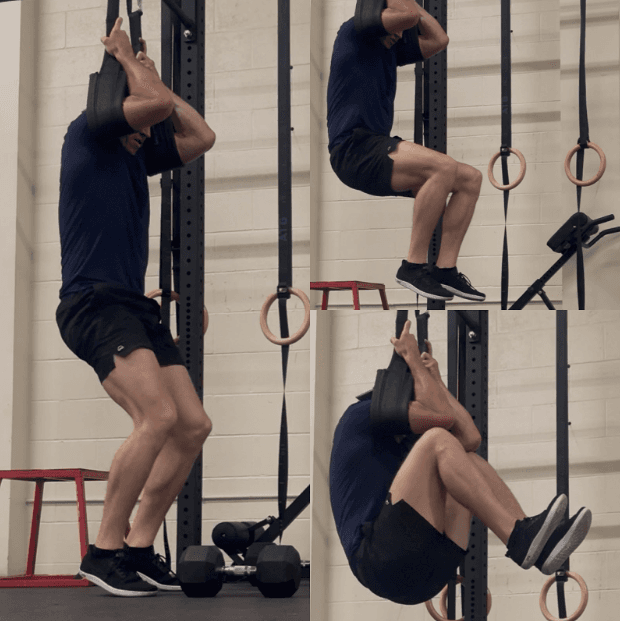
I then like the 45-degree angle for the side bends, but less angle = easier, so anyone can start from a standing position and gradually progress by increased load or angle.
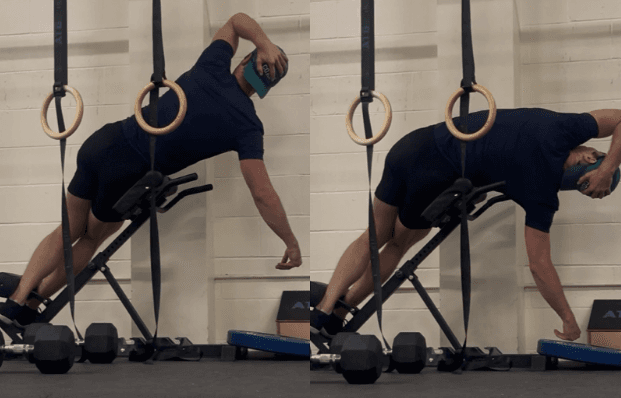
But all this still misses what I personally have observed over 15 years of helping people with back problems:
THE PRIMARY CAUSE OF LOWER BACK PAIN is the LOST MOBILITY which puts the lower back in a stressful position in the first place!
Fortunately, we can observe that there are 3 main ways to pick something up without overstressing the back, and they are some combination of:
-knee over toes
-upper hamstring flexibility
-knees widening
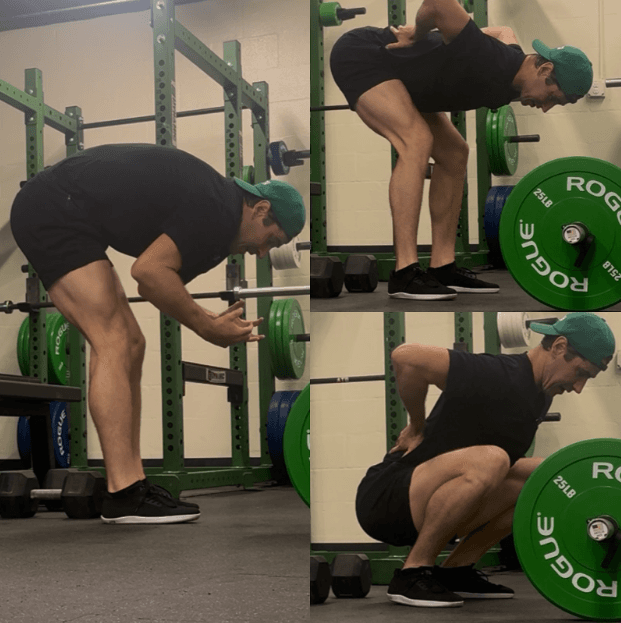
You can get creative trying to pick something up without your lower back rounding, but you’ll find these 3 common denominators.
Rounding isn’t inherently bad but the inability to resist rounding directly makes your lower back more vulnerable when squatting or bending down to pick something up.
And should you lift with your legs or your back?
Well, life doesn’t always give you a choice!
So ABILITY in each = greater protection.
Fortunately, each of these qualities has a scalable exercise!
The ATG Split Squat allows you to diagonally train into your ankle flexibility AND deep leg strength, directly affecting both the flexibility and strength of your lower body to help you lift without rounding your back…
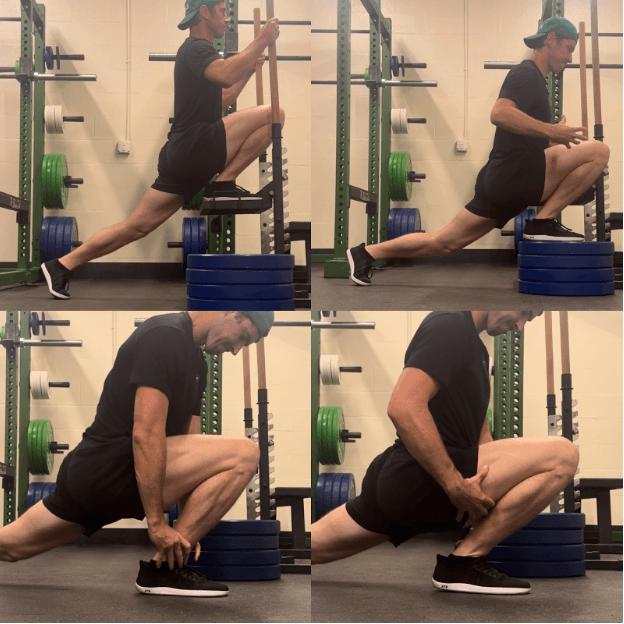
Oh, and it has a huge bonus of HIP FLEXOR FLEXIBILITY. The hip flexors are opposite of your lower back muscles and attach into your lower spine. Stiffness here also pulls you into a more stressful lower back position!

The seated dumbbell deadlift then allows you to address inner thigh flexibility WHILE strengthening your lower back muscles at the same time!
This directly affects your ability to get low without rounding your back, PLUS with greater lifting strength!

And the standing dumbbell deadlift allows you to address upper hamstring flexibility WHILE strengthening those upper hams and lower back muscles!
Again: You DIRECTLY improve your ability to pick something up without rounding AND with greater strength!
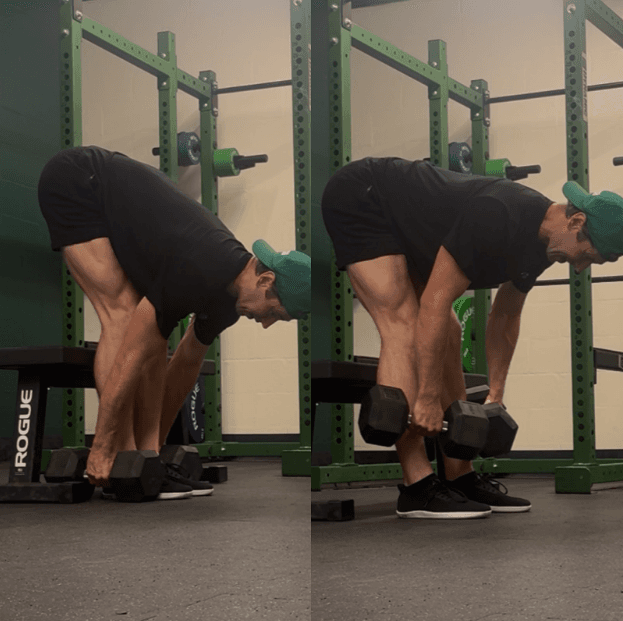
Yes, I get quite excited when talking or writing about this subject, but that’s because a “Big 3” around the lower back is common knowledge. However, a Big 3 UNDERLYING lower back stress was never written or filmed prior to my stumbling into this realization a few years ago.
Due to my recent switch to being a volunteer exercise coach at a school, training classes of 30+ students - AND faculty classes with massive ranges of age and ability - you’ll notice further simplifications in this article compared to any previous content I’ve done on this!
Now you’ve got my lower back system for life.
Slow and steady, you can make yourself a different beast.
Thank you for reading.
Yours in Solutions,
Ben
For the simplified Standards program I’ve been working on lately, which includes all these exercises: atgonlinecoaching.com.
And thank you for selling out our pre-assembled, foldable back extension. We’ll be back in stock soon. Our American-made ab straps, and our flexible, foot-shaped shoes with a bit more cushion than most barefoot shoes (because I’m regularly running around after a big dog and two free range kids, often on concrete) are also available at atgequipment.com.
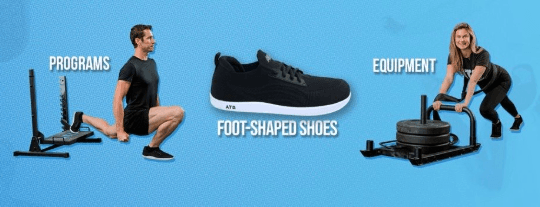
Sign up for free knowledge
We send out new articles weekly.